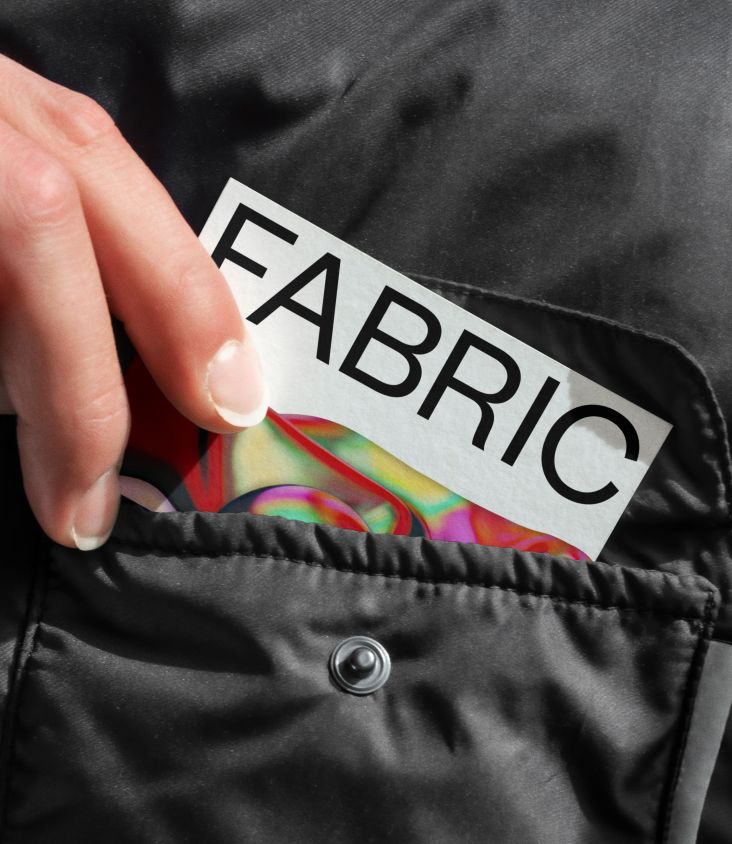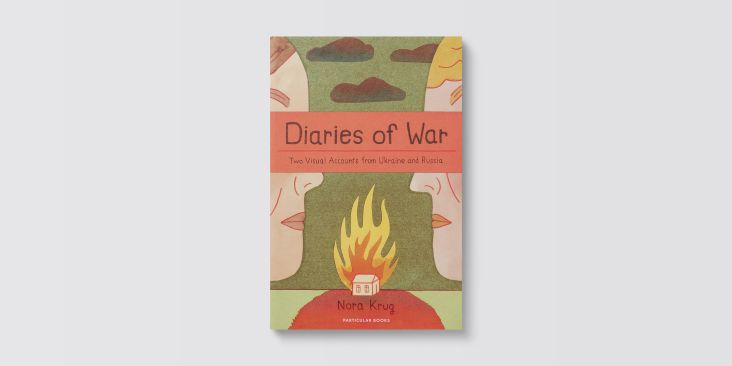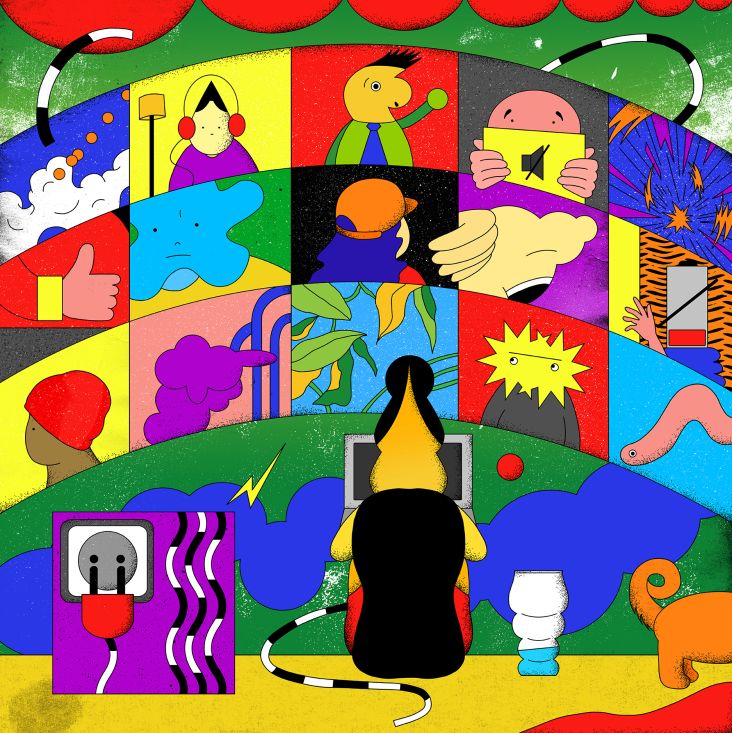How to change careers to one that's more creative
Stuck in the wrong job? Can't see a way forward? We chat to two successful creatives who started out in a different career, and share their best advice for anyone looking to make a change.

Image licensed via Adobe Stock
Not happy in your career? You're not alone. Countless people wake up every morning, less than enthusiastic about the day ahead. They'd rather be doing something more creative and fulfilling, but they don't really know how to go about it. If you're in that situation, this article is for you.
We only get one life, so there's no point in wasting it doing something you dislike, even if your current job is well paid. After all, what's the point in having money if you're miserable? You're only going to waste it on stuff that ultimately doesn't make you happy.
So what will make you happy? Well, waking up every morning looking forward to work, and being in the right creative career, is a great start. And you don't need to take our word for it. Read on, as we share the stories of two creatives who switched careers mid-stream, and have never looked back since.
This article is brought to you in partnership with Shillington, whose three-month full-time and nine-month part-time graphic design courses can help you get into the creative industry without the time and expense of a traditional design degree.
"I had no idea how to channel my creativity"
Gary Bradley's story is typical one of many who find themselves in the wrong career and are looking for a way out.
"Growing up, I loved building and making things," he recalls. "But at 16, I had no idea how to channel my creativity. Like most people, I’m a product of my upbringing. Being surrounded by several generations of good cooks on both sides of my family, I enrolled on a catering course at Huddersfield Technical College."
After cutting his teeth in France at several hotels, Gary took a post as a sous chef back in Huddersfield. "But it wasn’t long before I became bored and frustrated," he recalls. "I craved a different challenge."
Initially, he found an outlet for his frustrations through photography. "On Sunday mornings, I’d head out early to take photos of the deserted streets of Wakefield," he recalls. "I enjoyed the quiet after the hustle and bustle of kitchens, when the city was shrouded in a blanket of early morning mist."
"I was off, my head buzzing"
One autumnal morning in 1995, it was biting cold, so he popped into a café for a warming drink. There were a pile of magazines stacked by the window, and he picked up a copy of Creative Review, a print magazine dedicated to the creative industries.
"As I started flicking through it, I was hooked," Gary remembers. "As I finished my third pot of Yorkshire tea, I turned the page to see David Carson’s work. It was like nothing I’d seen before. It was text, but the kind of text that looked like it had been dragged through a copier backwards and chopped up with photos. Right then, I knew I had to try graphics."
It proved to be a life-changing moment. "I was off, my head buzzing," he remembers. "The following day, I handed in my notice at the restaurant. I called into Wakefield College with my GCSE art portfolio and asked the tutor, Tony Gray, if I could join the course. Fortunately, it was late September, and my luck was in, or he was just sick of me talking and feared his ears may bleed."
That was only Gary's first challenge, though. "At 19, I was still living at home, and my typically Yorkshire parents went ballistic when I brought them up to speed," he explains. "It probably wasn’t the time to ask for a loan to pay for the computer I’d need to create all this bat-shit crazy art. I waited a couple of weeks.
"We had to put off decorating the family bathroom to fund my computer, and we were stuck looking at chicken tiles for another year, but it was worth it."
"I'm a bazillion miles from where I was"
Today, Gary works as a freelance illustrator, mentor design teams as an Adobe Instructor and teaches two days a week at Sheffield College as a graphics lecturer. "Later this year, my first book will be released after Adobe Max," he enthuses. "It’s a bazillion miles from where I was 30 years ago. I absolutely love what I do."
Based on his experience, he has two main pieces of advice for anyone in a similar situation today. The first is psychological. "Listen to your head but follow your heart," he urges. "There’s nothing more soul-destroying than spending eight hours a day dreaming of being somewhere else. Trust me, I’ve been there."
The second is more practical. "Plan your transition and involve your friends and family every step of the way," Gary advises. "It answers a lot of questions and fears they might have about what impact this will have on you and those around you. And there’s often no better support network. They will invest in your dream just as you do if you share it." He appreciates switching careers is tougher if you're no longer living at home like he was. "But it's by no means impossible; it just takes a little longer."
His final tip is that: "Knowledge is critical to creating good design. You can learn the basics online and for free if you do a little digging around, like Chris Do’s channel on YouTube. So follow the work of successful artists, scour Behance for art styles you want to experiment with, and have a go. Be patient, stick at it and don’t be discouraged by setbacks. They are an unavoidable part of life and a great way to grow as a person and a creative.
"If you still feel like it’s the right move, you could look at part-time study more formally, like Shillington," he adds. "Your tutors will help you to develop a portfolio geared to the area of work you want to embark on. Reach out to the community, build potential employment connections, and find like-minded people. There’s a global community of kind and supportive creatives out there.
"Hard work will get you so far," he concludes, "but passion is 99% of what you need. The rest is talent. I love what I do, and I’ve never looked back since that day in the café."
"I broke down in tears. I hated the job I was doing."
Looking back, Gary realises now that he'd always wanted to do something creative with his life. But not all of us have that certainty. Some of us only realise halfway through another career that our heart lies elsewhere, and Craig Lovelidge is a great example.
"I started out working as a painter and decorator, decorating the interiors and exteriors of some of London’s top advertising agencies in the early 1980s such as McCormick Publicis, ABM & Grey," Craig explains. "I then changed jobs to become a carpenter and petitioner, working as an apprentice with my dad’s mate, building advertising agencies from the ground up, blue prints to final agency, for Y&R, Lowe Howard-Spink and Publicis."
Being in these environments opened Craig's eyes to the possibilities of life as a creative professional. "After many years of working in the above agencies, I saw multiple campaigns go from a hand-drawn concept – Letraset and Magic Marker – to a finished billboard.
"One week I’d be painting the creative department and see layouts and sketches on desks, I’d see presentation boards left in boardrooms. A few weeks later, I’d be going to work and see the artwork idea transformed into a fully created and art-directed bus stop poster and billboard. This fascinated me. Creative seeds were definitely being planted."
Consequently, in the early 90s he found himself wondering how he might become a creative himself. But there didn't seem an obvious path through. "I was constantly thinking up ad executions in my head, I was excited by TV ads, print ads and posters, but was totally lost and frustrated," he recalls. "I had no idea how I could swap the job I was doing, to do the job I really dreamed of doing."
Then one day in late 1993, everything came to a head. "I remember this day so vividly," he says now. "At home I was having a conversation with my mum. She knew something was up. I broke down in tears. I hated the job I was doing. I didn’t want to do it any more. I just wanted to throw it all in and switch to becoming a creative. Those mental seeds had properly started to sprout."
"This was my lightbulb moment"
Thankfully, his mum told him exactly what he needed to hear. "She gave me the idea of continuing doing my day job – so I could still earn money – but finding out how to break into the industry. So I went to the local library – no internet and Google back then! – and looked up careers advice on the advertising industry."
Craig was working full-time, so didn’t have the luxury of going back to college for three years. But then he stumbled across information about an advertising course in Watford. "This was a one-year copywriting and art direction course that replicated what it was like to be an advertising creative," he explains. "Many of these students left the course and started careers in London’s adland as junior copywriters and art directors. WOW! This was exactly what I was looking for. This was my lightbulb moment."
He applied, and received a copytest to fill out. "I spent hours and hours working on it. I sent it off and waited. The course averaged about 650 applicants each year, only 30 of which made it on to the course. But somehow I became one of them. Then, 36 weeks later, I left with a portfolio of ads and the title 'Student Team Of The Year'."
After a few years working as a young creative in London, Craig then managed to land a job at Jung von Matt in Hamburg, a story he outlines in this blog post. Today, he works as a creative consultant, helping agencies with troubleshooting and conceptual output.
His advice to others wishing to shift careers today is to build a practical plan. "Loosely define what it is you are aiming to do," he says." What is REALLY driving you? What makes you tick?" Then reach out to others. "In today’s social media frantic world, you have so much more scope to follow, view and connect with professionals in the field you’re looking to break into. Don’t be shy, reach out to these people.
"Tell them your story. Tell them your aim. Ask advice. Be a sponge. Build a scrapbook, note down all the things that tick off the answers to the questions in your head. Ask them to be a soundboard for advice on a continual basis. Respect their time and listen to the free guidance they give you."
Want to switch careers? Learn more about studying graphic design by visiting Shillington's website today.









](https://www.creativeboom.com/upload/articles/86/862919952c0ad18439004228895a431dc6e45ffc_732.jpg)













